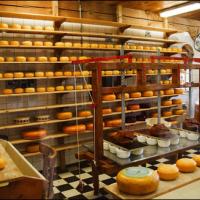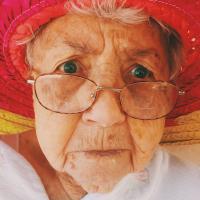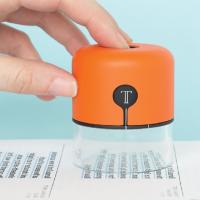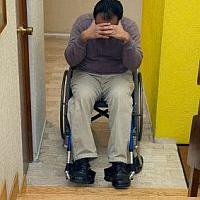Project Listings
Methods and Systems for Improved Food Processing (P150119)

CATEGORY
Foodtech, Sensors, IoT
DESCRIPTION
Solutions related to novel inventions that improve the ability to continuously monitor products in-line during processing for food and beverage machines. New technologies are needed to improve in-line, at-line, and near-line food processing measurement and sensing. Technology areas of interest include:
1. Potato Appearance: Inventions will identify and remove potatoes that appear defective from non-defective potatoes before processing in a high-throughput manner. Preferably, the system will be able to detect defects in un-washed potatoes.
2. Potato Composition – Starch: Inventions will identify and remove potatoes that fail to have between 14% and 21% starch composition, ideally 18% with 2% +/- variation. Preferably, inventions should be non-invasive, but minimally invasive technology will be considered.
3. Potato Composition – Reducing Sugar: Inventions will identify and remove potatoes that have more than 0.03% reducing sugar. Preferably, inventions will be non-invasive, but minimally invasive technology will be considered.
4. Oil: Inventions will help maintain the sweet spot of oil freshness by monitoring FFA, AV, polymeric triglycerides and total polar materials. Solutions will predict the formation of the four general drivers of oil quality. Capital expenditures should be below USD$100K per process line, preferably around USD$50K.
5. Extruded Products – Raw Materials: Inventions should be able to characterize the raw material before placement in the extruder.
6. Extruded Products – Rheology: Once in the extruder, inventions should be able to measure the rheology of the product including the visco-elasticity. New equipment is acceptable, but it advantageous to have inventions that can be retrofitted into existing extruders. Measurement should be conducted more up-stream at the bore.
7. Texture: Inventions should be able to quantify texture for snack-food products at the process line in real-time in order to give feedback to the process line.
8. Carbonation: Inventions will measure the carbonation level of cans, PET bottles, and glass bottles in-line and non-destructively. Pressure-based, optical-based, or other techniques are welcome.
COMPENSATION PLAN
1. S$8,500 for each invention disclosure that are accepted by our clients
2. 30% future royalties from the commercialisation of the accepted invention disclosure
3. Terms of payment: Within 30 days
Club Aged

A social media club for aged citizen to gather and find suitable activities to be engaged. I have worked out the business model and it is exciting! Contact me for more details on the business model and value propositions,
Superior Methods For Converting Sucrose Into Glucose And Fructose (P160110)

CATEGORY
Foodtech, Chemistry
DESCRIPTION
Solutions related to novel inventions that improve process for converting sucrose into glucose And fructose. The improvements may be from improvements using existing technologies or from a completely different methodology:
This project seeks inventions that
1. Attractive inventions should allow efficient (>90% conversion in <4 hours), cost-effective (<$250K capital at commercial scale and <$0.03 per gallon variable cost) production of invert sugar of high quality for use in food and beverage applications.
2. Areas for improvements include but are not limited to: increasing conversion efficiency, shortening throughput time, minimizing side reactions and by-product formation, reducing energy consumption and environmental footprint, reducing production cost, and allowing easy control and automation of the process.
3. Technologies that are adaptable to various operation conditions (e.g. temperature, pH, concentrations) and sources of raw materials are welcome.
4. High heat method is challenging from a cost perspective. If heating is needed then current acid hydrolysis solution is likely the way to go for cost considerations. A rapid, non-thermal method maintaining current liquid sucrose process/storage temperatures of 70 – 100?F would be a breakthrough.
5. If processing aids are used, they must be completely removed by the end of the process. Processes having a stationary phase that liquid sucrose passes through are acceptable.
6. Any material in contact with the product must be food safe or in line of site to GRAS approval.
Areas out of scope for this project:
i. Any radiation-based methodology
ii. Technologies that modify the ingredient list on the product label, that is, involving adding chemicals, biologicals, or other materials that cannot be removed afterwards
Inventors are strongly encouraged to provide considerations on industrial scale-up and both capital and operational costs for the proposed inventions. Note also that the expected deployment of the technology is to many facilities and not necessarily to a large central location.
COMPENSATION PLAN
1. S$8,500 for each invention disclosure that are accepted by our clients
2. 30% future royalties from the commercialisation of the accepted invention disclosure
3. Terms of payment: Within 30 days
Formal project specification here: http://invcapital.com/pub/ic/Prj-160110_specs.png
Device That Allows You to Precisely Identify Colours & Fonts

Writing comes naturally to many people. It is a conveyance of a message that is demonstrated through some medium, many times being visual. However, writing is only half the tale. In order to make a document gleam and stand out, it needs to look professional. Choosing the write font to convey a message can be insanely difficult as you scroll through the endless feeds of fonts, looking for that one you saw that one time- and it looked fantastic.
Fortunately, the device sets to assist writers and designers with a new device that precisely identifies colors and fonts. The device uses a camera and specialized algorithm that analyzes and then precisely determines exactly what font was used and the colors it contains. The device is currently under development by ACME who wants to take the guesswork out of design.
The device uses a system derived from the machine learning software called XYZ algorithm. However, the device analyzes fonts instead of recognizing shapes of images of animals. It can recognize even minute details including color, size, kerning and leading- as well as a unique feature that can let you know where to buy it.
Unfortunately, the device is still in the early stages of development. The product currently must be used with a strict set of rules such as the font must be 48pt font size or less and captured right-side-up. Also, it can currently only recognize a select few fonts. However, over the next two years, ACME hopes to finalize the project and bring the device to market.. ACME hopes the device will cost no more than US $80. Hopefully, the device will enable writers and designers alike to create a piece with a font that looks the same on a computer as it does on paper, saving time, money, and frustrations.
Food Packaging and Smart Food solutions - Accelerating products into the market

I'm looking for interested partners to commercialize product solutions together in the areas of food solutions ranging from packaging and food sensors, flavor retention, preservatives, food alternates. If you have IPs and not planning to commercialize them, let me know too!
Today, 9 billion people on the planet is facing food shortages, and just the opposite side of the world , millions of people are wasting food. The hot and humid weather conditions in Asia is pushing customers demanding for more transparent packaging to see the food contents and also to extend the shelf life of food . We also expect that with better oxygen, UV, odor barrier, the food will stay in good condition for a longer period of time. This in turn may help reduce the amount of food preservatives and may help improve inventory turnaround.
We are trying to build the ecosystem based in Singapore from testing standards, to food testing solutions, or even solutions to improve the cold chain logistics via new startups and spin offs.
If you have solutions , please write to me at radiana_soh@etpl.sg
RUSH Rides - A new ride-hailing App in Singapore

RUSH App provides a seamless experience for the riders using innovative features to improve the ride experience as compared to the current existing app in the ride-hailing industry. For the driver is providing a sustainable and reasonable pricing system to ensure higher take home earnings comparable to the incumbent of the industry.
The stage of the company is at the implementation stage (pre-launch). The App is being developed and will be launched officially on 1st October 2016. The registration for drivers had started on 26th of July 2016. Currently, as of today we have around 30+ drivers who signed up prior the soft launch.
We are looking for investors who might be interested to invest in this technology company that is trying to make a difference using innovative & creative features.
fundMyLife

fundMyLife is an early-stage insurtech startup that helps users ask financial planning questions and connect with financial advisors that they can trust, with consultant profiles and client reviews.
Our vision is to make financial planning great again, and empower consumers to confidently make sound financial decisions. We want to be the one-stop portal for all things financial planning.
Small steps, huge challenge - overcoming mobility issue for wheelchair users in old HDB flats

In older HDB flats, typically there are steps leading up to the corridor units. For wheelchair users, this impedes their ability to get in and out of the unit indepedently, which reduces the oportunities for the wheelchair user to be integrated with the society.
Ramps are a option, but they may not work in all cases e.g. those with narrow corridors. Cost is another issue, as motorised options typically cost much more. Another area to work around are the various policy issues imposed by HDB, SCDF, BCA and Town Councils.
Are we able to come up with an affordable solution to allow wheelchair users to get in and out of the unit independently, without the need to modify existing infrastructure?